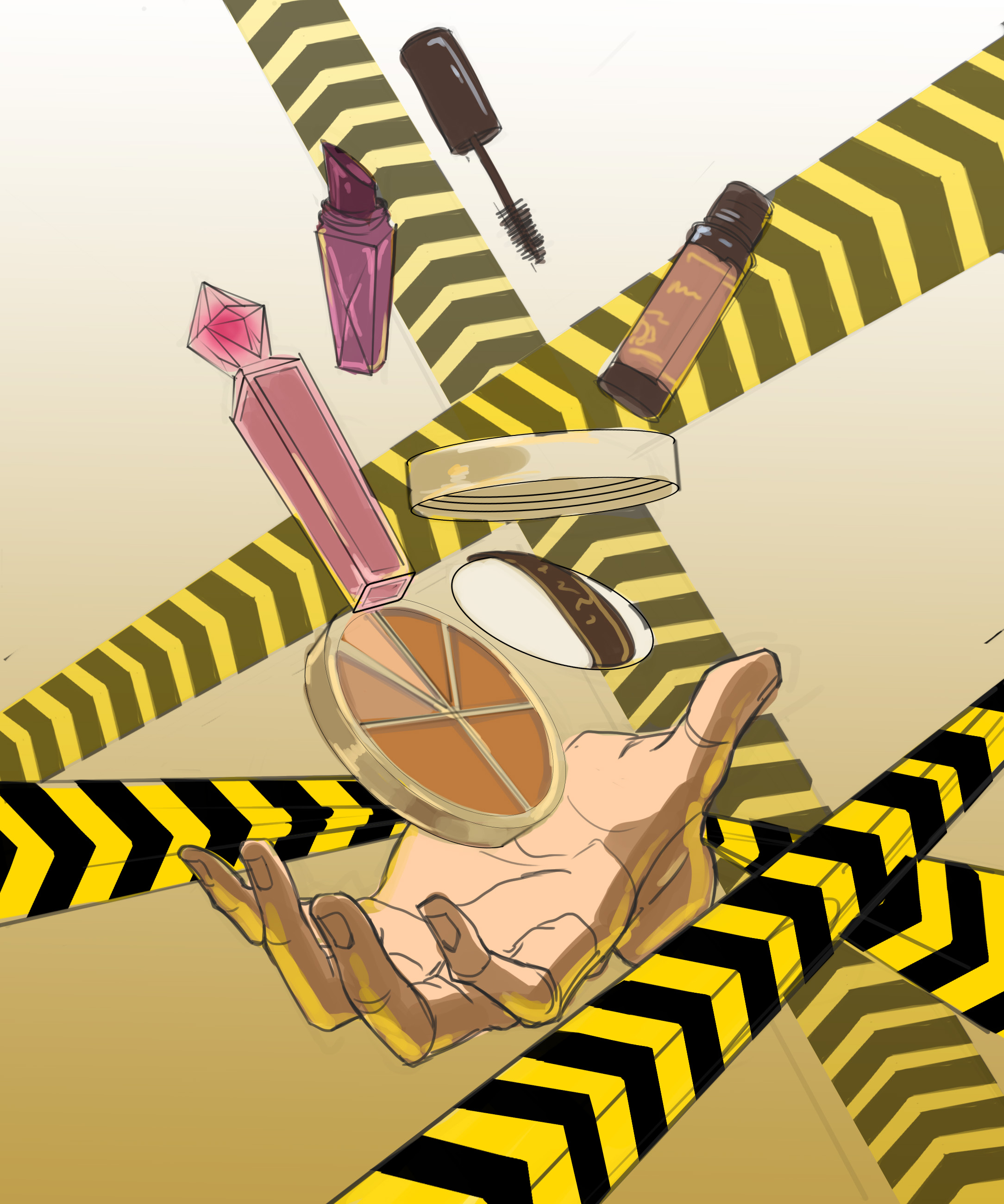The Quad: Consider clean cosmetics to cut out possible carcinogens in your everyday life

(Iris Huang/Daily Bruin)
By Alexa Greco
April 22, 2019 6:08 p.m.
Formaldehyde is a key ingredient in embalming dead bodies.
But the chemical’s uses don’t end there. Formaldehyde can be released by substances found in a number of cosmetics, including hair and skin care products.
Toxic ingredients from coal tar to those that release formaldehyde – a compound linked to cancer – are regularly used in deodorants, lotions, makeup, and perfumes – but our country’s regulations on them are surprisingly limited.
Teniope Adewumi-Gunn, a Ph.D. candidate in the UCLA Fielding School of Public Health, has conducted research on the use of cosmetic products and their effects on salon workers, and she said she is working to make changes on the policy level regarding safer cosmetics.
“Unfortunately, cosmetics are under-tested and under-regulated, so what we are seeing on the research end when looking at the ingredients in these products is a lot of adverse effects,” Adewumi-Gunn said.
Some important toxins she said people ought to look out for are phthalates, heavy metals and fragrance.
While the Food and Drug Administration requires cosmetics be safe, it does not require any type of testing for these products, as it does with drugs, and the question of what qualifies as safe is often ambiguous. When cosmetic products are tested, they are often only short-term studies that check for an irritable or allergic reaction from the product. Many of the long-term effects of cosmetic products on the market are unknown because the products are solely evaluated for short-term effects.
Due to the United States’ leniency when it comes to regulations, many possible carcinogens make their way into everyday cosmetic products.
However, there are a variety of groups that attempt to mitigate the use of dangerous substances in cosmetics.
One such group is the Environmental Working Group, a nonprofit, nonpartisan organization that works to diminish the toxins in the environment and to educate consumers so that they may make informed decisions on the products that they are using and eating.
The EWG rates cosmetics based on a number of hazardous factors, including cancer, developmental and reproductive toxicity, allergies, and immunotoxicity, which is the effect to the immune system when it is exposed to dangerous chemicals. Each product is then given an overall score based on these concerns.
According to the EWG, teenage girls use 17 cosmetic products a day on average. Additionally, a study found that because of the daily use of cosmetics, adolescent girls have a number of toxins in their bodies, many of which can be hormone disrupting. Girls often begin experimenting with cosmetics around puberty, and links have been found between some ingredients and endocrine disruption. These dangers are not limited to women, as altered hormone levels and sperm damage have been linked to cosmetic products used by men as well.
The toxins used in cosmetic products include phthalates, which are industrial plasticizers, preservatives and several other toxic ingredients. The EWG provides a comprehensive list of ingredients to avoid, and the potential dangers associated with each.
In Europe, 1,328 chemicals have been banned in cosmetics, while in the US only 30 have been banned. This discrepancy comes from the lack of long-term data collected by the FDA and its lack of comprehensive testing when it comes to cosmetics.
Isabel Schulte, a second-year chemical engineering student, is the founder of Unravel, a sustainable fashion club at UCLA. In addition to overlooking Unravel, she is also doing research through the UCLA Grand Challenges program, which is about sustainability in supply chains, and works to educate students on the dangers of toxins in clothing and beauty products.
“The chemical impact aspect is something that is very unique to clothing and beauty and is difficult to quantify, unlike greenhouse gases or water use, because different amounts of different chemicals are harmful and those are very hard to go through and quantify, which also makes it hard to regulate,” Schulte said.
Students often use products that are popular or more economically feasible instead of products with clean ingredients because they are not as widespread.
“If the clean products are a similar price to those that I use, I would be willing to try them,” said Elliott Santos, a second-year psychology student.
Schulte said she suggests that students who may not be able to afford clean products look up recipes for DIY cosmetics such as lotions and deodorants, which can be easily made in a kitchen. She also points to the fact that the UCLA student store is starting to expand its selection of clean options that are affordable.
Adewumi-Gunn suggested using apps such as GoodGuide and Think Dirty, which allow you to search for products and to see what ingredients could be potentially harmful.
“It is about educating people and then having folks make informed decisions. If you are educated on the dangers of the product and still choose to use it, you are making an informed decision,” Adewumi-Gunn said.


